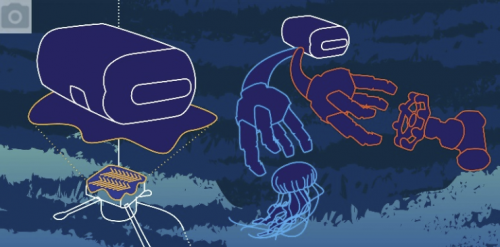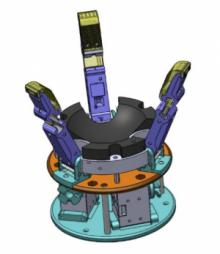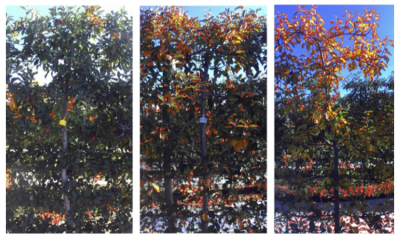| Underwater manipulation |
|---|
Due to the high pressures at depth, all deep ocean manipulation is performed by robotic systems acting as human analogues. The majority of such systems are simple remotely-operated vehicles (ROVs) and feature little functional intelligence; adding assistive computer control can enhance the effectiveness of the human operator, reducing risk and increasing task efficiency. This project focuses on the research and development of technologies which leverage robotic sensing and control to improve the efficiency of subsea manipulation while maintaining human-in-the-loop control authority.

This work is funded by the Office of Naval Research (ONR).
| Learning to pick fruit |
|---|
Despite extensive research over the past thirty years, robotic fruit harvesters are not yet commercially available. Prior work has considered manipulation a robot position control problem, disregarding the need for sensor input after physical contact with the fruit. However, when picking fruit such as apples and pears, professional pickers use active perception, incorporating both visual and tactile input about fruit orientation, stem location, and the fruit's immediate surroundings. We propose to embrace this physical contact by incorporating a rich set of in- hand sensors in an extended manipulation feedback loop with the goal of providing fine control over how the fruit is separated from the tree.

This work is funded by USDA NIFA through the Cyber Physical Systems (CPS) program.
| Robotic pruning |
|---|
The specific research objective of this project is to develop a robotic system for autonomous, dormant pruning of fruit trees. Our approach is to first build high-quality digital models of the trees offline using a combination of artificial intelligence techniques and human intervention. Second, we use the knowledge gained from studying the manual pruning process to formulate pruning rules, which can be 'practiced' on the digital models and evaluated for their effectiveness. Third, we will use state-of-the-art machine learning algorithms to map pruning plans back to the real world in order to reduce onsite computational demands. Fourth, we will design a custom end-effector that can localize itself in real time in order to safely and reliably perform the pruning cuts.

This work is funded by USDA NIFA through the Agriculture and Food Research Initiative (AFRI) program.
| Precision orchard management |
|---|
The current standard practice of broad-acre orchard management does not result in targeted actions that are optimal for individual trees – this reduces the impact of management decisions and wastes resources while falling short on achieving the yield and quality potential of individual blocks. Our overall objective is to improve fruit quality and yields by managing individual trees using a combination of automated sensing, decision support tools, and precision application with variable rate technology.

This work is funded by the Washington Tree Fruit Research Commission (WTFRC).